1216 - Non-testing Classifications
Category
Appointments
Audience List
- Examination Managers
- Human Resources Chiefs
- Human Resources Staff
- Personnel Officers
- Personnel Transactions Supervisors
Synopsis
This policy:
- Provides guidelines for establishing, utilizing, and monitoring hires in non-testing classifications.
- Applies to temporary employment needs, such as seasonal work, job readiness training, and specialized short-term roles.
Introduction
This policy provides guidelines for the use of non-testing classifications and the monitoring of hires to these classifications.
Statement
Non-testing classifications may be established and utilized to address specific temporary employment needs, such as seasonal work, job readiness training, or short-term specialized roles. Examples include:
- Seasonal Employment: The Franchise Tax Board hires seasonal clerks annually to assist during the tax filing season.
- Job Readiness Training: Departments may employ graduate student assistants to perform technical work in their field of study, preparing them for continued state employment.
- Specialized Temporary Roles: Pre-licensed pharmacists may be employed temporarily while registered to take the Pharmacist licensure examination.
Application
Examination
Non-testing classifications do not require candidates to undergo an examination or certification process. All appointments to these classifications are temporary, as defined by Government Code section 18529.
Duration
Article VII, section 5 of the California Constitution limits temporary appointments to 9 months in any 12-consecutive-month period. Therefore, non-testing classifications are also limited to 9 months in 12-consecutive-months.
Civil Service Status
Appointees in non-testing classifications do not gain permanent status in state service. Time spent in these roles does not count toward completion of a probationary period.
Minimum Qualifications
Candidates must meet the minimum qualifications of the classification prior to appointment. Time served in a non-testing classification may count as qualifying experience for other state classifications.
Designation
Non-testing classifications are designated in the Pay Scales with the footnote “NT.” A complete list of these classifications is available in the Resources section.
Process
Counting Time Worked
The 9-month period is calculated daily, with every 21 days worked counting as 1 month, or 189 days equaling 9 months.
Any day worked, regardless of the number of hours worked, and any paid absence counts toward the 189-day limit.
The 12-consecutive calendar month timeframe begins by counting the first pay period worked. The employee shall serve no more than a total of 189 days in a 12-consecutive-month period. A new 189-day working limit in a 12-consecutive-month timeframe may begin in the month immediately following the month that marks the end of the previous 12-consecutive-month timeframe or any subsequent month.
For example, a graduate student assistant who began employment on May 15, 2024, and worked their 189th day on April 15, 2025, may begin a new 12-consecutive-month period on May 1, 2025.
The 189-day working limit shall be calculated per employee, not per position or per agency.
For student, youth, and seasonal classifications, a maximum limit of 1500 hours within 12 consecutive months may be used rather than the 189-day working limit. Either way of counting is acceptable for these specific classifications.
Hiring and Selection
Candidate Assessment
Appointing powers may use any selection method appropriate to identify the most suitable candidate for the position.
CalWORKS Recipients
Priority consideration must be given to California Work Opportunity and Responsibility to Kids program (CalWORKs) recipients who meet the minimum qualifications for specified seasonal or entry-level non-testing classifications. Departments must maintain written documentation of such appointments.
Hiring Preference for Student Assistants and Internships
For internships and student assistant positions, state agencies must provide preference to qualified applicants who are, or have been, dependent children in foster care, homeless youth, or formerly incarcerated youth. For more information, please see the Human Resources Manual Section 1207.
Documentation and Retention
Departments are required to retain all documentation related to non-testing classification appointments for at least five years. These records are subject to review by the State Personnel Board’s Compliance Review Division.
Authorities
- Article VII, section 5 of the California Constitution
- California Code of Regulations, title 2, section 171
- California Code of Regulations, title 2, section 26
- California Code of Regulations, title 2, section 265
- California Code of Regulations, title 2, section 265.1
- Government Code section 18220
- Government Code section 18522
- Government Code section 18529
- Government Code section 19058
- Government Code section 19059
- Government Code sections 19063 - 19063.8
Resources
Related Policies
- Policy 1201: Student Assistants
- Policy 1207: Hiring Preference for Student Assistants and Internships
- Policy 1212: Temporary Appointments (TAU)
Web Pages
- List of Non-Testing Classifications: Non-Testing Classifications
Authorized By
Chris Dainard
Chief
California Department of Human Resources
Michelle La Grandeur
Chief, Policy Division
State Personnel Board
Melissa Russell
Chief
Personnel Management Division
Contact Person
Personnel Management Division
Personnel Program Consultant
, Personnel Management Division
Phone: 916-909-3295
Email: pmd@calhr.ca.gov
Superseded Policies
Not Applicable.History
Please note that some PDF Forms may not be opened directly in your browser. These PDF forms may be downloaded and saved to your computer to be opened with Adobe Reader.
